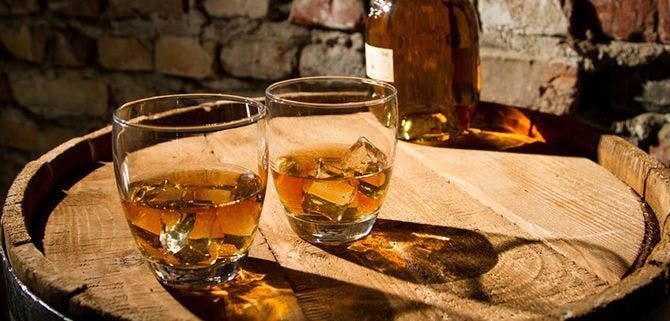Beer and whiskey start with the same basic ingredients. What makes them different and what effect does the barrel aging process have on the chemistry of whiskey? ACS Publications has some answers that may surprise you.

Did you know that whiskey and beer start from the same basic ingredients? They’re made from the same grain mash and fermented the same way.
So what makes them taste so different? Most people know that whiskey and other liquors are distilled after fermentation. This is done to preserve the beverage by concentrating the alcohol. Beer instead adds a small amount of hops, which contains an antibacterial compound named lupulin1 that performs this function and adds bitterness to the brew. Whiskey loses its sweetness during distillation and is given its flavor when it is aged in charred oak barrels by allowing oxidation of the oak itself2 and adding tannins and other compounds to the liquid. The charcoal interior of the barrel also acts as a secondary filter, though it doesn’t protect the liquor from losing the “angels’ share” through the porous wood.
The barrel aging process also helps explain why whiskey was used historically as an anesthetic. Ethanol itself is an ionotropic GABAA receptor. These receptors slow down neurotransmission, which lessens anxiety, sedates, and serves as an anesthetic. But ethanol is not the only GABAA receptor in whiskey; the fragrance component3 that is provided by the oak barrel aging also potentiates the receptor.
Want to find out more about the chemistry of whiskey? ACS Publications can tell you what causes the floral scent in whiskey,4 how we can quantify the whiskey sensory experience5 using modern testing methods, how whiskey can soothe anxiety3,6 and increase radical scavenging, 7 and even why scotch whiskey doesn’t leave rings. 8 You can also find a lab experiment for chemistry students to learn about distillation and IR spectroscopy9…using whiskey-flavoring compounds!
You can learn more about making whiskey on our YouTube channel10 and about whiskey’s component chemicals on Compound Interest.